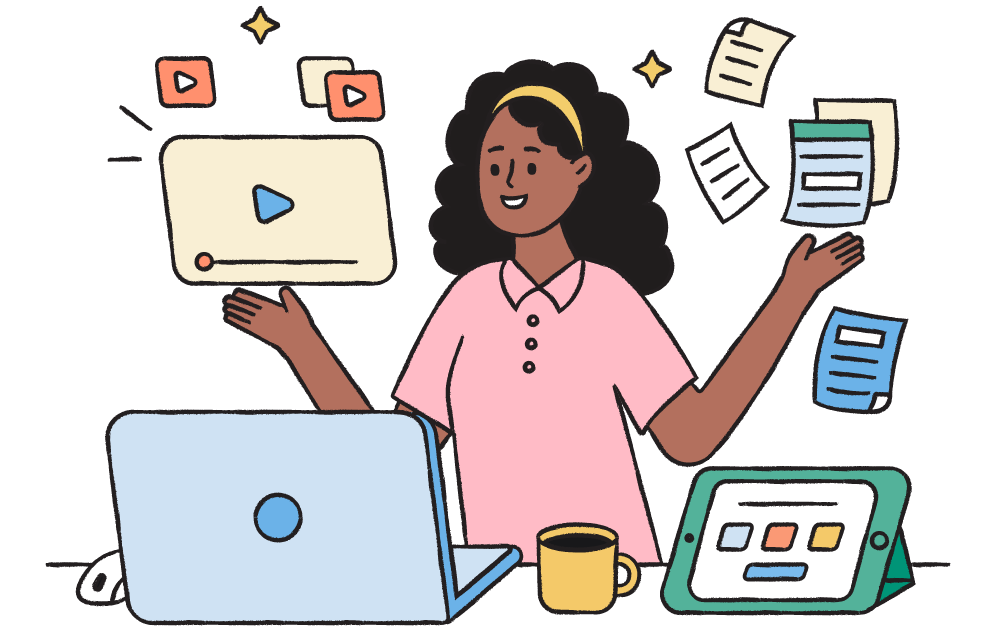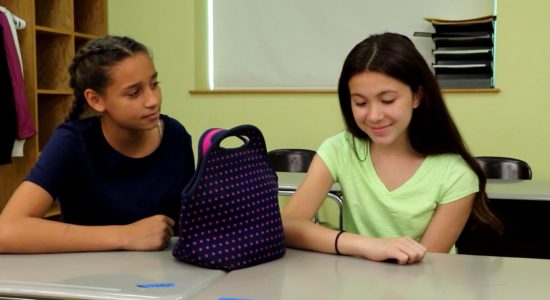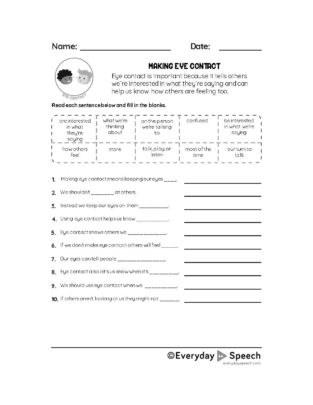Try the no-prep way to teach Visual Referencing
Take the prepwork out of teaching essential social-emotional skills with Everyday Speech! Subscribe to access step-by-step curriculum and over 1,000 videos, games, and more.

Preview an SEL skills lesson: Visual Referencing

Narrator: Making eye contact means we look at who we are talking to or playing with. We use eye contact whether we are listening or doing the talking. When we’re listening, it’s important to look with our eyes because it lets people know we’re listening and interested in what they say.
When we’re talking, looking at others lets us know if they are interested in what we’re saying, how they’re feeling, and when it’s our turn to talk. If we don’t use eye contact, it can make others feel confused. Let’s see what it looks like when Madison doesn’t make eye contact.
[SCENE 1]
Haley: I got a new lunch box! I really like it.
Madison: Ooh! I like the polka dots.
Haley: Thanks! What are you having for lunch today?
Madison: Turkey and cheese. What about you?
Haley: I’m having leftover pasta. My mom makes really good sauce.
Madison: That sounds good.
Haley: Uh… yeah.
Narrator: What happened there? How did Madison make Haley feel? Let’s see.
Haley: (internal thought) Madison wasn’t looking at me when we were talking. That made me feel like she wasn’t listening or she didn’t want to talk to me.
Narrator: Haley feels confused because Madison wasn’t making eye contact. Madison was looking around the room and then down at the table. When Madison didn’t look at Haley, it made Haley think she didn’t want to talk or wasn’t listening. That’s why eye contact is so important. Let’s watch Madison try again.
[SCENE 2]
Haley: I got a new lunch box! I really like it.
Madison: Ooh! I like the polka dots.
Haley: Thanks! What are you having for lunch today?
Madison: Mmm, turkey and cheese. What about you?
Haley: I’m having leftover pasta. My mom makes the best sauce!
Madison: That sounds good!
Haley: She makes it from scratch.
Narrator: That time, Madison was able to use eye contact. She looked down at the lunch box for a second, then looked up at Haley. This showed Haley that Madison was listening and interested in their conversation. When we make eye contact, you can still move your eyes around, but we make sure to keep them on the person we’re talking to for most of the time. This way, we won’t miss any of their clues and we won’t send any messages with our body by mistake.
Try Everyday Speech free for 30 days to see all our videos and their companion activities and games!





